Today, the average cruising boat is probably in the 40- to 45-foot range. To my mind, that is too big for a couple to handle in all conditions. True, electric winches and furling mainsails can reduce physical effort—until something goes wrong. The forces at play on a big boat are huge, and beyond what a normal human can handle without mechanical aids. Smaller boats have smaller masts, sails, and anchors. Since they have fewer hull openings, they are easier to keep watertight. Finally, because they are simpler, they are easier to maintain in faraway ports.
When I first began to dream about ocean cruising, the first book I read was Trekka Round the World by the late, great John Guzzwell. John was very much alive then, and we later became friends. Trekka was a 20-foot boat designed by Laurent Giles and homebuilt by Guzzwell. Looking at her design today, I see few if any features I would recommend for a circumnavigation. Now, she would be considered small for even a weekend. Courage, the resilience and resourcefulness of the youthful owner, and good luck took John safely around the globe.
WHAT IS A SMALL BOAT?
Times have changed, and it is time to redefine the ideal small cruiser. First, let’s define small. In my mind, less than 30 feet overall could be considered small. But a more useful definition is displacement weight. For this, I would set the limit at 12,000 pounds or so. I once owned a 34-footer that displaced 6,000 pounds, and believe me, it was a small boat. Conversely, the steel Roberts Spray 33, which I drew while working for Bruce Roberts in 1979, displaces 22,000 lbs. and has a lot of room below. It has tremendous carrying capacity.
Perhaps the easiest way to start would be with a list of requirements. In general, I would define a small offshore cruising boat as one that can cross oceans with a crew of one or two, in relative comfort and safety.
I have sailed on many boats, and have owned a dozen or so, ranging from a 26-foot fiberglass Folkboat to a Pearson 424. That Folkboat, Eclat, was, for many years, my favorite of all the boats I have owned. Her sweet, perfectly balanced sailing capabilities combined with an easy motion to secure my love.

My love for the Folkboat was tested recently, however, when I went aboard a sister ship. I had forgotten how flexible (and preferably small in stature) one needs to be. I would still enjoy sailing one, but not living aboard for extended periods. The lack of headroom didn’t bother me in my twenties, but it would now.
Back to the list. Without mentioning specific designs, here are my ideal characteristics for a small cruising boat.
- Standing headroom in the galley and head.
- A rudder and keel strong enough to withstand a grounding.
- Enough draft and stability for decent windward performance.
- An anchor you can pull up without an electric windlass.
- A well-balanced helm.
- At least two good sea berths.
You may have noticed that I didn’t say anything about keel configuration. I do not subscribe to the stereotype that a full-length keel is best for an offshore boat. Before discussing keels, I would like to talk about construction.
HULL MATERIAL
If you are planning to buy an existing boat, there is a very high probability that you will be looking at fiberglass, since FRP boats vastly outnumber all other materials. A well-made fiberglass boat can be most suitable for offshore sailing, and some production boats meet my criteria. Almost anything built by Pacific Seacraft, Valiant or Island Packet will fill the bill. The same applies to Morris, Able, Hinckley, Hallberg-Rassy, Amel and Wauquiez. Unfortunately, many of these builders have moved upmarket—building bigger, more expensive boats—or gone out of business.
USED BOATS OF VALUE

In the 70s and 80s, there were some smaller boats designed with voyaging in mind. The Vancouver 27 and 32 by Robert Harris and the Bristol Channel Cutter by Lyle Hess spring to mind. These are still good boats today.
An online search showed a well-equipped and maintained 1983 Vancouver 27 in the PNW offered at $24,500. That is an excellent value if the boat suits you. One caveat, it is a safe but not particularly fast sailer. I often sailed my 25-foot Folkboat alongside one, and the Folkboat was quicker and more weatherly, although less comfortable.
The 28-foot Bristol Channel Cutter of about the same vintage is a better performer and has an attractive traditional look. They retain their value very well, resulting in selling prices of $100,000 or more. That kind of budget opens up many other possibilities, including newer production boats in the 35 to 40-foot range.
I found several David Sadler-designed Contessa 32s for sale in a range from $34,000 to $60,000 USD. This boat is known for surviving the infamous Fastnet race disaster of 1979 when many bigger boats capsized or sunk. The Contessa is hard to beat, a real offshore boat at a good price. They are the kind of boat owners cherish, so they are generally in excellent condition.
The British-built Victoria 30, designed by the estimable Chuck Paine is another offshore-ready boat, which can be found used at a reasonable price. The Morris Leigh 30 is the same design, a little better finished but usually much more expensive. The Morris Linda 28, also designed by Paine, is another beauty, but the only used example I could find was high priced.
Pacific Seacraft has built many offshore capable boats. The 31 and 34 are available used for under $100,000 and hold their value well. These are high-quality boats that perform. Of the two, I prefer the 34.
DIY BUILDS
It is worth mentioning that you may come across one-off fiberglass boats (built without a mold) of which many will be home-built. I started my design career selling plans for home builders, and I have been aboard many. I can say that both the best-built and the worst boats I have examined have been home-built. Before purchasing one, a thorough survey is essential.
STEEL AND ALUMINUM
Not everybody likes fiberglass, and there are several alternatives to consider. I would rule out ferrocement (and I know I’ll get hate mail as a result). Metal boats are built from steel or aluminum. I have designed many successful steel yachts, ranging from the humble Tom Thumb 24 to a custom-built SP Metalcraft 65-footer. It is an excellent and reliable material if properly painted and maintained. Having owned one myself for a season, I realize that I’m not inclined to do the amount of work needed to maintain a steel boat up to my standards.
Were I to build a new custom boat for myself, I would choose hard chine aluminum as the material. While more expensive than steel, it is easier to work and does not require paint above the waterline, or inside the hull. A Tom Thumb 24 or similar vessel in aluminum would be a better boat than the steel version because of its lighter weight and greater carrying capacity.
Bottom line, unless you are young and energetic, with time and money on your hands, I wouldn’t recommend building a boat today. There are simply too many good boats available used, at prices far below the cost of materials to build a new one. I would add that if you do go down that road, choose a design from a reputable designer and follow the plans carefully.
IDEAL FEATURES
Now I will list the characteristics of my ideal small offshore cruiser. Cost is not a factor here, so many of the “ideal” features may have to be compromised when it comes to buying one. These features are independent of building material.
HULL SHAPE

I would choose a long waterline with minimal overhangs, with a near-plumb stem. I would prefer a canoe body flat or nearly flat in the midship area. Speed is tied to waterline length. Displacement hulls, which include virtually all offshore cruisers, have a limiting hull speed. For a 32-footer with a waterline of 25 feet, hull speed is 6.5 knots. For the same boat with a 32-foot waterline, the hull speed is 7.35 knots. This translates to a possible additional 25 miles a day.
In a metal boat, the keel would be integral to the hull, but in the shape of the shortest (lengthwise) yet deepest fin that my cruising ground would allow. In a fiberglass boat, a deep keel stub with ballast bolted at the bottom would be my choice.
The hull would be 32-feet long, with a half-load displacement of 10,000 pounds. The beam would be about 11 feet, with a wide stern, but still tapered in from the maximum. A broad beam and a low center of gravity contribute to stability and sail-carrying power.
RUDDER
For responsive steering, a balanced spade rudder is the most desirable, and with the right design, can be very strong indeed. Chuck Paine has mastered the art of combining a balanced rudder with a long keel, and a large propellor aperture. My approach is to make the rudder sturdy and leave it freestanding. However, a narrow metal sked could be used, bolted on in the case of a fiberglass boat.
RIG
I would choose a tall 15/16 sloop rig with single swept-back spreaders. The mast would be relatively far forward and deck stepped. Chainplates would be outboard. The jib would be self-tacking with the track extending right to the rail. This working jib would tack to the stemhead, but there would be a 3-foot anchor-sprit with an attachment point for the tack of an asymmetric spinnaker. The spinnaker and other light sails would set from the masthead.
This rig would produce a boat that—with a masthead drifter or spinnaker—can sail well in light winds, something often encountered offshore. With the main reefed and the working jib partly or completely furled, she could beat off a lee shore in a gale. In average sailing conditions, she would be easy to sail, and tacking upwind would be effortless. (ask him how she would heave to)
DECK

The cockpit would be 7-feet long, extending right to a vertical or slightly forward-raked transom. The floor would slope aft, and the transom would be open, with a boarding step and ladder. I prefer wheel steering, but a tiller would work too. The forward end of the cockpit would be covered by a hard dodger with a center-opening windshield. A bridge deck would protect the companionway from flooding.
The cockpit seat length allows even tall crew to stretch out for napping at anchor or grabbing a few winks on night watch. The open transom allows the cockpit to drain quickly. My personal experience in the 2010 Vic-Maui race, showed that even an open transom can fill to the brim when a big wave comes over the top, but it empties far more quickly than the bathtub-sized cockpit drains on many boats. A drop board could be fitted at the stern to keep pets and small children in.
Ideally, hatches and ports, when closed, should be as watertight as a submarine. What leaks most often is the companionway, but a properly designed dodger will keep that dry. Dropboards should be tied together and also to the boat, so they can’t go overboard in a knockdown. A hard dodger provides a good platform for a couple of solar panels.
I prefer wheel steering since it allows an integrated autopilot with the drive motor below deck. Experience has shown this to be far more reliable than wheel or tiller pilots exposed to the elements. Windvane steering is useful but often finicky to operate.
INTERIOR

So far, this description–apart from the hard dodger–fits many current production boats. The Hanse 315 comes to mind, although it has twin wheels which I find excessive. The major differences would be inside.
The engine would be under the cockpit floor, either a diesel saildrive (my preference) or a regular shaft. I prefer a saildrive because there is no alignment needed, and since the entire unit is rubber mounted, there is less vibration to filter up through the soles of your feet.

Two long quarter berths would lie on either side of the companionway. These would extend far enough into the main cabin to serve as seats. Then there would be a head to starboard and a galley to port. That puts it on the low side when on the starboard tack, which has right-of-way.
Forward of the galley/head would be a U-shaped dinette with the opening of the U facing aft. This is where the layout greatly deviates from production boats. Ahead of the dinette would be two watertight collision bulkheads, delineating a deck-access-only sail locker, and a separate, self-draining anchor locker.
WHY BUY USED INSTEAD
As I write this, I realize the futility of designing a new boat. Even a new production boat like the Island Packet 249 cost over $400,000, and a custom boat would be more. It would be far more effective to buy a used boat of suitable design and equip it for your use.
My first boat cost $15,000 in 1971. It was a plywood trimaran, well-used and very spartan. That is about $115,000 today, and trust me, you can buy a far better boat for less than that.
Virtually no new boat is ready to go offshore as delivered. It took me five years to get my 2001 Hanse 371–bought new–ready for serious cruising. When buying a used boat for offshore, the best deal is likely to be prepared and equipped for voyaging, but not heavily used. Owner’s plans change, and such boats do appear on the market with surprising frequency.
In conclusion, when it comes to small cruising yachts, because most cruisers seem to go bigger, bargains abound. In the words of the late Larry Pardey, “Go small, go simple, go now!”



















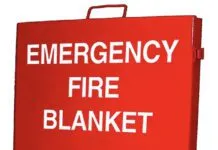

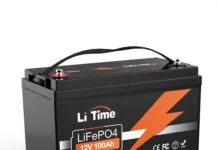

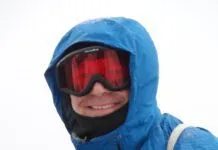

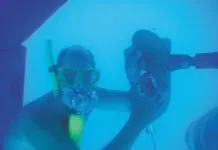

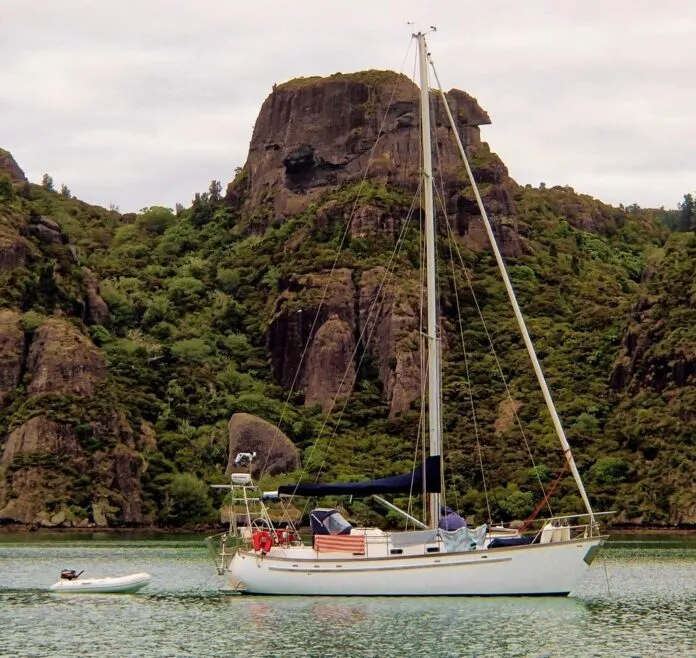

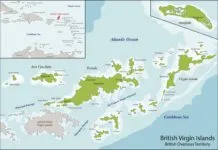





The simplicity of your voice and years of experience designing and sailing boats makes this article valuable for any serious off shore sailing enthusiast. Looking forward to reading more from the treasure of experience that you have.
Thanks – I’m new to sailing and learning a lot reading these articles. Certainly, my fantasies are becoming less grandiose and there is a practical reality setting in, especially since I’ve taken a couple of sailing lessons.
I look forward to many more informative and fun articles.
Interesting and helpful piece. Thank you. I am currently doing a major refurbishment of a Chuck Paine designed, Tom Morris built Frances 26. The hull, keel and rudder are all in perfect shape (Chuck worked on them recently) but everything, and I do mean everything else is gutted and being replaced. My intent is to single hand an Atlantic crossing with her so that is always front of mind as I work through the process.
I’m glad to see a seasoned expert support the value to ‘going small’, and have seen a couple of cases where near-retirement age folks overbought and either physically, financially, or emotionally (or some combo) became overwhelmed. I’ve gratefully learned that a smaller boat sailed more often is better than a larger boat at the dock. I can see a lot of utility in focusing on displacement, not only regarding storage space but also as to on-going (kentucky windage) maintenance costs. Respectfully, I would disagree on the freestanding rudder and am a believer in the value of protecting it at all costs. I’d not considered the value of the wheeled-auto-pilot versus the tiller-mounted, but that seems prudent. One thing not mentioned but one which I think about is tracking ability. I’m uncertain as how to determine that other than by reputation. Your experience on that topic would be greatly appreciated. Great article. Thanks!
Great article! I sailed my first sailboat in 1979, a C&C-36 in St. Thomas, with NO sailing experience, except reading a couple books. Sailed dozens of boats in the BVI & the Bay Islands. Owned three power boats, 53, 56, and 44′ Powercat. At 81, and in good shape, I’m still dreaming of sailing the world. Your article is very helpful, since my wife says “no” more living on a sailboat. ha-ha So, solo I will go.
Thanks Grahame for your very direct and prescriptive recommendations. Very much the reason I bought a 1985 Hallberg-Rassy 352 four years ago in my plans to go cruising. Love the hard dodger for all the reasons you describe. I also like the center cockpit but do agree that while I have not yet experienced heavy seas and filling up the cockpit — the drainage for these bath tub areas is simply not good enough; would much prefer an open cockpit that quickly drains astern along with a more accessible transom for getting on board that comes along with most open cockpits.
This is a good article covering the features and advantages of a good cruising sailboat. Having raced and sailed on a range for boats from a Palmer Johnson 42′, a C&C 39, a Cal 3-30 and a Olsen 34 I have found that a ~34 foot sail boat is a good size to consider for cruising and racing. I lean to the larger size for stability and speed to get you safely to where you need to go. The 34 foot sail boat has room for a good head, a nav station and a workable galley. What’s important is that you have a boat you can afford and love to sail.